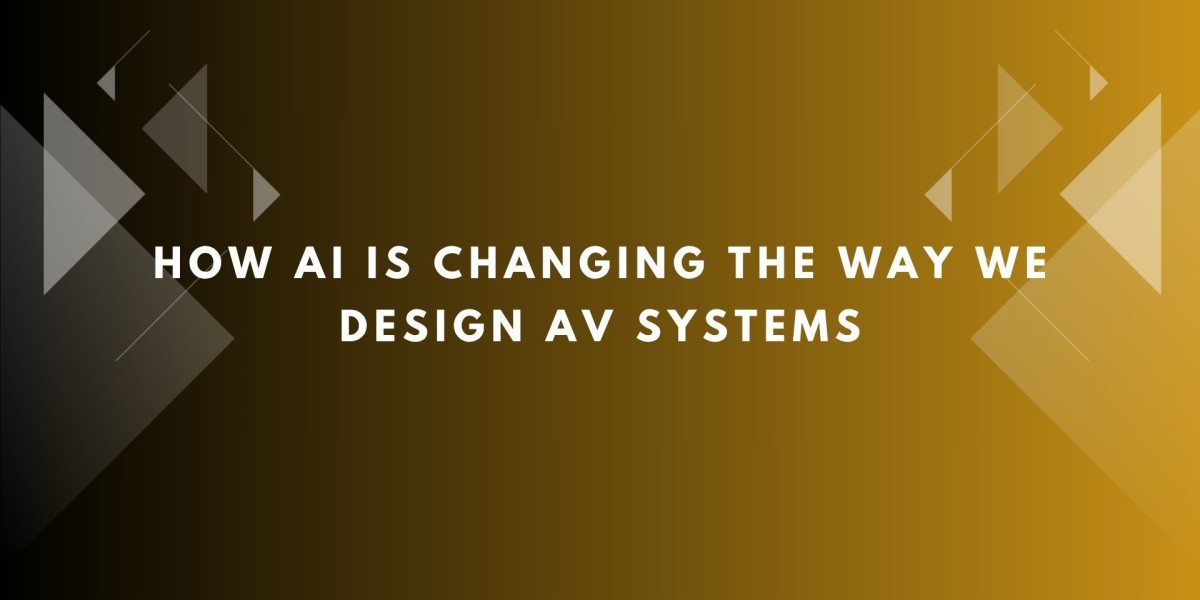The audio visual (AV) industry is evolving at a rapid pace. One of the biggest forces driving this transformation is artificial intelligence (AI). From automated design recommendations to predictive maintenance and smarter user interfaces, AI is reshaping how AV systems are planned, built, and operated. As technology continues to advance, AV professionals are discovering that AI not only improves efficiency but also opens up new possibilities for creativity and innovation. In this blog, we will explore how AI is changing the way we approach Designing AV Systems and what this means for integrators, designers, and end users.
Smarter and Faster Design Processes
Traditionally, Designing AV Systems involved manual calculations, countless diagrams, and significant trial and error. Every room or venue presented unique challenges, requiring designers to carefully select and place each component to achieve the desired outcome. Today, AI-powered tools are streamlining this process in remarkable ways.
AI-driven design platforms can analyze room dimensions, acoustics, lighting conditions, and seating arrangements to automatically generate optimal system layouts. For example, they can suggest the best locations for speakers, displays, microphones, and cameras based on performance data and best practices. This reduces the time required to develop initial designs while also minimizing the risk of human error.
In addition, AI tools can help identify potential problems early in the design phase. They can run simulations to detect issues such as dead spots in audio coverage, sightline obstructions, or insufficient display brightness. This allows designers to address challenges before installation begins, saving time and resources.
Automated Signal Flow and System Integration
AI is making it easier to plan and document complex signal paths. In large-scale AV systems, managing connections between various components—such as processors, amplifiers, cameras, displays, and control interfaces—can be overwhelming. AI-enabled design software can automatically generate signal flow diagrams that accurately represent how components should connect, ensuring compatibility and eliminating common mistakes.
By reducing manual work on signal routing and system integration, AI frees up designers to focus on higher-level decision making. The result is a more efficient workflow and systems that are easier to install, configure, and maintain.
Enhanced Customization and User Experience
Every space and client has unique requirements, and AI is helping designers tailor solutions more precisely than ever before. With AI tools, designers can input parameters such as audience size, room usage patterns, and preferred technologies. The AI then generates design options that align with these needs, complete with equipment lists and cost estimates.
AI is also improving the end-user experience. For example, smart control systems use AI to learn how users interact with AV technology and adjust settings accordingly. This might include automatically adjusting volume levels, display brightness, or camera angles based on the time of day or type of event. These intelligent systems create smoother, more intuitive experiences for presenters and audiences alike.
Predictive Maintenance and System Monitoring
One of the most valuable contributions of AI to AV systems is in predictive maintenance. AI-powered monitoring platforms continuously analyze system performance data, looking for signs of wear, failure, or suboptimal operation. For example, they might detect that a projector lamp is nearing the end of its life, or that a network switch is handling unusual traffic patterns.
By alerting technicians before problems cause downtime, AI helps prevent disruptions during important meetings, classes, or performances. This proactive approach extends the life of AV equipment and reduces maintenance costs over time.
Designing AV Systems with Sustainability in Mind
Sustainability is becoming a greater priority in all industries, including AV. AI is playing a role here as well by helping designers create energy-efficient systems. AI can recommend components that use less power or suggest configurations that minimize energy consumption without compromising performance. For example, an AI tool might design a lighting control system that automatically adjusts based on occupancy and natural light levels.
By integrating sustainability goals into the design process, AI helps organizations reduce their environmental impact while still delivering high-quality AV experiences.
Collaboration and Real-Time Design Adjustments
Modern AV projects often involve multiple stakeholders, from architects and interior designers to IT teams and AV consultants. AI-powered platforms are making collaboration easier by allowing teams to work on shared designs in real time. Cloud-based AI tools can process updates instantly, offering design suggestions or highlighting conflicts as they arise.
This level of collaboration not only speeds up the design process but also ensures that the final system works well within the broader environment of the building or campus.
The Future of AI in AV Design
While AI is already making a significant impact, its role in AV design is only beginning. Future developments could include:
Voice-activated design assistants that allow designers to create diagrams and layouts simply by describing their vision.
AI-generated documentation that updates automatically as changes are made, saving time on project paperwork.
Augmented reality (AR) and AI combinations that let designers visualize system components in physical spaces before installation.
Even smarter AI recommendations that factor in historical data, industry trends, and real-world usage patterns to optimize designs.
These innovations promise to make AV design faster, more accurate, and more creative than ever before.
Conclusion
AI is transforming the AV industry by making the process of Designing AV Systems more efficient, accurate, and user-centric. From automating layouts and signal paths to enabling predictive maintenance and enhancing sustainability, AI offers valuable tools that help professionals create better systems in less time. As technology continues to evolve, those who embrace AI will be well positioned to deliver innovative AV solutions that meet the complex demands of modern spaces. By understanding and leveraging AI, designers and integrators can push the boundaries of what AV systems can achieve, delivering outstanding results for clients and audiences alike.
Read more: https://youslade.com/read-blog/126339






